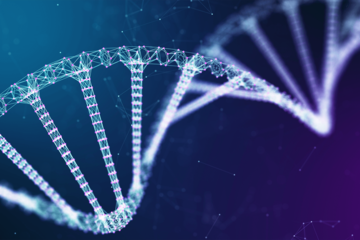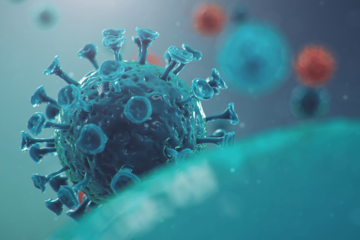We found 83 results that contain "category 1"
Posted on: #iteachmsu


Category Playlist
Sharing Strategies
Think, Pair, Share/Square Share/Group Share: Using this
approach, students work with peer partners to discuss the lesson, check each other’s
work, and share strategies.
Think, Pair, Share/Square Share/Group Share: Using this
approach, students work with peer partners to discuss the lesson, check each other’s
work, and share strategies.
Posted on: #iteachmsu


1-ADHD Students and Classroom Considerations-1
The culture of the classroom can either support or create barriers to student success (Piffner,
2011).
Factors that foster attention, positive behavior, and academic and social success include
establishing positive relationships with students, adopting classroom management techniques,
and creating a physical arrangement that facilitates learning.
It is often a positive relationship with one teacher that facilitates school success for a student
with ADHD (Piffner, 2011).
When teachers connect with students and appreciate their unique skills and interests, students are more likely to strive for achievement and positively respond to classroom rules and procedures.
2011).
Factors that foster attention, positive behavior, and academic and social success include
establishing positive relationships with students, adopting classroom management techniques,
and creating a physical arrangement that facilitates learning.
It is often a positive relationship with one teacher that facilitates school success for a student
with ADHD (Piffner, 2011).
When teachers connect with students and appreciate their unique skills and interests, students are more likely to strive for achievement and positively respond to classroom rules and procedures.
Posted on: #iteachmsu


playlist 1
This program is an online continuous course with no specific start or end date.
Creating a Culture of Collaboration and Interprofessional Teaming is an online self-paced course offering. This offering is made possible through the support of Venturit's internal WIzdn team.
Creating a Culture of Collaboration and Interprofessional Teaming is an online self-paced course offering. This offering is made possible through the support of Venturit's internal WIzdn team.
NAVIGATING CONTEXT
Posted on: #iteachmsu


Category Playlist
Sharing Strategies
Think, Pair, Share/Square Share/Group Share: Using this
approach, students work with peer partners to discuss the lesson, check each other’s
work, and share strategies.
Think, Pair, Share/Square Share/Group Share: Using this
approach, students work with peer partners to discuss the lesson, check each other’s
work, and share strategies.
Posted on: #iteachmsu


Biology - Lesson 1
Key Points
Biology has evolved as a field of science since it was first studied in ancient civilizations, although modern biology is a relatively recent field.
Science is a process that requires the testing of ideas using evidence gathered from the natural world. Science is iterative in nature and involves critical thinking, careful data collection, rigorous peer review, and the communication of results.
Science also refers to the body of knowledge produced by scientific investigation.
Pseudoscience is a belief presented as scientific although it is not a product of scientific investigation
Biology has evolved as a field of science since it was first studied in ancient civilizations, although modern biology is a relatively recent field.
Science is a process that requires the testing of ideas using evidence gathered from the natural world. Science is iterative in nature and involves critical thinking, careful data collection, rigorous peer review, and the communication of results.
Science also refers to the body of knowledge produced by scientific investigation.
Pseudoscience is a belief presented as scientific although it is not a product of scientific investigation
NAVIGATING CONTEXT
Posted on: #iteachmsu


Checklist of Homework Supplies: Give the student a checklist that identifies categories of items
Extra Books: Provide the student with an extra set of books or electronic versions of books for use at home. This eliminates the student having to
remember to bring books back and forth.
remember to bring books back and forth.
NAVIGATING CONTEXT
Posted on: #iteachmsu


Full blood count 1
Department of Haematology
Notes
Full blood counts are performed on automated equipment and provide haemoglobin concentration, red cell indices, white cell count (with a differential count) and platelet count.
The presence of abnormal white cell and red cell morphology is flagged by the analysers.
Blood films may be inspected to confirm and interpret abnormalities identified by the cell counter, or to look for certain specific haematological abnormalities.
Grossly abnormal FBC results and abnormal blood films will be phoned through to the requestor.
There is no need to request a blood film to obtain a differential white count. It is, however, important that clinical details are provided to allow the laboratory to decide whether a blood film, in addition to the automated analysis, is required.
Under some circumstances a differential is not routinely performed, e.g. pre-op, post-op, antenatal and postnatal requests.
Full Blood Counts are performed at CGH and GRH
See also: Reticulocyte Count
The FBC comprises the following tests
Standard
Haemoglobin (Hb)
White Blood Count (WBC)
Platelet Count (Plt)
Red Cell Count (RBC)
Haematocrit (HCT)
Mean Cell Volume - Red cell (MCV)
Mean Cell Haemoglobin (MCH)
Differential White Cell Count (where applicable)
Neutrophils
Lymphocytes
Monocytes
Eosinophils
Basophils
And if appropriate
Blood Film
Sample Requirements
2ml or 4ml EDTA sample or a Paediatric 1ml EDTA sample.
Sample Storage and Retention
Pre analysis storage: do not store, send to laboratory within 4 hours.
Sample retention by lab: EDTA samples are retained for a minimum of 48 hours at 2-10°C
Transport of samples may affect sample viability, i.e. FBC results will degenerate if exposed to high temperatures, such as prolonged transportation in a hot car in summer.
This test can be added on to a previous request as long as there is sufficient sample remaining and the sample is less than 24 hours old.
Turnaround Times
Clinical emergency: 30 mins
Other urgent sample: 60 mins
Routine: within 2 hours
Reference Ranges
If references ranges are required for paediatric patients please contact the laboratory for these.
Parameter Patient Reference Range Units Haemoglobin Adult Male 130 - 180 g/L Adult Female 115 - 165 g/L Red Cell Count Adult Male 4.50 - 6.50 x10^12/L Adult Female 3.80 - 5.80 x10^12/L Haematocrit Adult Male 0.40 - 0.54 L/L Adult Female 0.37 - 0.47 L/L Mean Cell Volume Adult 80 - 100 fL Mean Cell Haemoglobin Adult 27 - 32 pg White Cell Count Adult 3.6 - 11.0 x10^9/L Neutrophils Adult 1.8 - 7.5 x10^9/L Lymphocytes Adult 1.0 - 4.0 x10^9/L Monocytes Adult 0.2 - 0.8 x10^9/L Eosinophils Adult 0.1 - 0.4 x10^9/L Basophils Adult 0.02 - 0.10 x10^9/L Platelet Count Adult 140 - 400 x10^9/L
Notes
Full blood counts are performed on automated equipment and provide haemoglobin concentration, red cell indices, white cell count (with a differential count) and platelet count.
The presence of abnormal white cell and red cell morphology is flagged by the analysers.
Blood films may be inspected to confirm and interpret abnormalities identified by the cell counter, or to look for certain specific haematological abnormalities.
Grossly abnormal FBC results and abnormal blood films will be phoned through to the requestor.
There is no need to request a blood film to obtain a differential white count. It is, however, important that clinical details are provided to allow the laboratory to decide whether a blood film, in addition to the automated analysis, is required.
Under some circumstances a differential is not routinely performed, e.g. pre-op, post-op, antenatal and postnatal requests.
Full Blood Counts are performed at CGH and GRH
See also: Reticulocyte Count
The FBC comprises the following tests
Standard
Haemoglobin (Hb)
White Blood Count (WBC)
Platelet Count (Plt)
Red Cell Count (RBC)
Haematocrit (HCT)
Mean Cell Volume - Red cell (MCV)
Mean Cell Haemoglobin (MCH)
Differential White Cell Count (where applicable)
Neutrophils
Lymphocytes
Monocytes
Eosinophils
Basophils
And if appropriate
Blood Film
Sample Requirements
2ml or 4ml EDTA sample or a Paediatric 1ml EDTA sample.
Sample Storage and Retention
Pre analysis storage: do not store, send to laboratory within 4 hours.
Sample retention by lab: EDTA samples are retained for a minimum of 48 hours at 2-10°C
Transport of samples may affect sample viability, i.e. FBC results will degenerate if exposed to high temperatures, such as prolonged transportation in a hot car in summer.
This test can be added on to a previous request as long as there is sufficient sample remaining and the sample is less than 24 hours old.
Turnaround Times
Clinical emergency: 30 mins
Other urgent sample: 60 mins
Routine: within 2 hours
Reference Ranges
If references ranges are required for paediatric patients please contact the laboratory for these.
Parameter Patient Reference Range Units Haemoglobin Adult Male 130 - 180 g/L Adult Female 115 - 165 g/L Red Cell Count Adult Male 4.50 - 6.50 x10^12/L Adult Female 3.80 - 5.80 x10^12/L Haematocrit Adult Male 0.40 - 0.54 L/L Adult Female 0.37 - 0.47 L/L Mean Cell Volume Adult 80 - 100 fL Mean Cell Haemoglobin Adult 27 - 32 pg White Cell Count Adult 3.6 - 11.0 x10^9/L Neutrophils Adult 1.8 - 7.5 x10^9/L Lymphocytes Adult 1.0 - 4.0 x10^9/L Monocytes Adult 0.2 - 0.8 x10^9/L Eosinophils Adult 0.1 - 0.4 x10^9/L Basophils Adult 0.02 - 0.10 x10^9/L Platelet Count Adult 140 - 400 x10^9/L
Posted by: Super Admin
Disciplinary Content
Posted on: #iteachmsu

ann-one-school 1
https://iteachmsu.dokku.venturit.net/
Posted by: Chathuri Super admin..
Assessing Learning
Posted on: #iteachmsu

India vs England, LIVE Cricket Score Updates, 2nd Test Match Day 1 at Lord’s: Rain delays toss, pitches still under cover
Live Cricket Score Updates, India vs England: Rain has delayed the toss as Virat Kohli-led India eye redemption against England in the second Test of their five-match series at Lord’s on Thursday.
Live Updates: The toss was delayed due to rain as India face England in the second Test at Lord’s. The visitors trail 1-0 after they were beaten in the first encounter at Edgbaston and Virat Kohli & Co will look to produce a better show on a ground where they have won just 2 out of their last 17 Test matches. Kohli will be banking on his top-order batsmen to fire after a disappointing show in the first Test and the visitors can opt for a second spin option in Kuldeep Yadav. For England, Ollie Pope will be making his debut with Moeen Ali possibly playing alongside Adil Rashid in the spin department.
Live Updates: The toss was delayed due to rain as India face England in the second Test at Lord’s. The visitors trail 1-0 after they were beaten in the first encounter at Edgbaston and Virat Kohli & Co will look to produce a better show on a ground where they have won just 2 out of their last 17 Test matches. Kohli will be banking on his top-order batsmen to fire after a disappointing show in the first Test and the visitors can opt for a second spin option in Kuldeep Yadav. For England, Ollie Pope will be making his debut with Moeen Ali possibly playing alongside Adil Rashid in the spin department.
Posted by: Chathuri Super admin..
Navigating Context
Posted on: #iteachmsu


Categorization of Artificial Intelligence
Categories of AI
Artificial intelligence:
can be divided into two different categories: weak and strong. Weak artificial intelligence embodies a system designed to carry out one particular job. Weak AI systems include video games such as the chess example from above and personal assistants such as Amazon's Alexa and Apple's Siri. You ask the assistant a question, it answers it for you.
Strong artificial intelligence systems are systems that carry on the tasks considered to be human-like. These tend to be more complex and complicated systems. They are programmed to handle situations in which they may be required to problem solve without having a person intervene. These kinds of systems can be found in applications like self-driving cars or in hospital operating rooms.
Artificial intelligence:
can be divided into two different categories: weak and strong. Weak artificial intelligence embodies a system designed to carry out one particular job. Weak AI systems include video games such as the chess example from above and personal assistants such as Amazon's Alexa and Apple's Siri. You ask the assistant a question, it answers it for you.
Strong artificial intelligence systems are systems that carry on the tasks considered to be human-like. These tend to be more complex and complicated systems. They are programmed to handle situations in which they may be required to problem solve without having a person intervene. These kinds of systems can be found in applications like self-driving cars or in hospital operating rooms.
Authored by: Rupali
Assessing Learning
Posted on: #iteachmsu


The relationship between science and technology
Science, technology and innovation each represent a successively larger category of activities which are highly interdependent but distinct. Science contributes to technology in at least six ways: (1) new knowledge which serves as a direct source of ideas for new technological possibilities; (2) source of tools and techniques for more efficient engineering design and a knowledge base for evaluation of feasibility of designs; (3) research instrumentation, laboratory techniques and analytical methods used in research that eventually find their way into design or industrial practices, often through intermediate disciplines; (4) practice of research as a source for development and assimilation of new human skills and capabilities eventually useful for technology; (5) creation of a knowledge base that becomes increasingly important in the assessment of technology in terms of its wider social and environmental impacts; (6) knowledge base that enables more efficient strategies of applied research, development, and refinement of new technologies.
Posted by: Greg Thomsan
Posted on: #iteachmsu

What is waterfall model
Waterfall model embedded Video URL:Table Format:
Name
Author
Category
Description
Article 1
Vijaya
Navigating context
This is a test table
Name
Author
Category
Description
Article 1
Vijaya
Navigating context
This is a test table
Posted by: Super Admin
Posted on: #iteachmsu


Which Foods You Should Eat To Increase Hemoglobin Count?
Hemoglobin is an iron-rich protein in red blood cells (RBCs). The normal hemoglobin range for men is 13.5 to 17.5 gm/dL and 12 to 15.5 gm/dL for women. It is of utmost importance to maintain hemoglobin concentration.
What you need to know:
What functions does hemoglobin perform in our bodies?
What causes low hemoglobin?
Symptoms of low hemoglobin
What are the foods that can increase hemoglobin level?
Tips to increase your hemoglobin levels
What functions does hemoglobin perform in our bodies?
Hemoglobin is vital for carrying oxygen from the lungs to tissues and organs. It also transports carbon dioxide from the tissues back to the lungs.
What causes low hemoglobin?
Some common causes of low hemoglobin are:
Substantial blood loss
Deficiency in iron, vitamin B, and folate
Kidney disease
Hypothyroidism
Thalassemia
Lung diseases
Excessive smoking
Any type of blood loss can cause anemia, including blood loss from surgery, heavy menstrual periods, and bleeding in the gastrointestinal tract.
Symptoms of low hemoglobin
You can detect extremely low hemoglobin levels in your system in a few ways. They include
A fast or irregular heartbeat
Fatigue
Frequent or unexplained bruising
Shortness of breath
Liver and kidney disease
Pale skin and gums
Muscle weakness
Reoccurring headaches
Dizziness
Poor appetite
Anemia in severe cases
Elevated hemoglobin levels are associated with dehydration, heart failure, and chronic lung disease. In some conditions, the bone marrow may not produce enough RBCs, leading to cancers like leukemia, lymphoma, or tumors that spread from other parts of the body into the bone marrow.
What are the foods that can improve your hemoglobin levels?
It is essential to boost your food intake to raise your hemoglobin levels. Here are some foods to increase hemoglobin levels:
Iron-rich foods: Consume iron-rich foods like fish, meat, eggs, soy products, broccoli, green leafy vegetables that include spinach, fenugreek leaves, cauliflower, green peas, cabbage, green beans, nuts and seeds, and peanut butter, to increase your hemoglobin levels.
Vitamin A: It is pertinent to consume vitamin A foods to increase hemoglobin as they absorb more iron. Vitamin A and beta-carotene can help you there. Vitamin A is found in animal food sources, such as fish and liver. Beta-carotene is found in red, yellow, and orange fruits and vegetables.
Folate: Folate is a type of Vitamin B that plays an essential part in hemoglobin production. A shortage of folate can prevent the red blood cells from maturing, leading to anemia. Some good sources of folate include beef, rice, black-eyed peas, kidney beans, lettuce, and peanuts.
Foods rich in vitamin C: A combination of iron and vitamin C can prove to be beneficial. The latter is used for better absorption of iron. Foods rich in vitamin C include oranges, lemon, strawberries, papaya, bell peppers, broccoli, and tomatoes.
Fruits: It is also perfect to have fruits like beetroot, apple, watermelon, papaya, oranges, litchis, kiwis, strawberries, grapefruit, banana, and peach, which can boost hemoglobin levels. Plus, dry fruits, like dates, can increase the number of erythrocytes, thereby increasing hemoglobin levels. They contain iron, vitamin C, vitamin B complex, and folic acid, which helps in the formation of red blood cells. Raisins are also a rich source of iron and copper necessary to form red blood cells.
Avoid iron blockers: Foods that block your body’s ability to absorb iron, such as coffee, tea, alcohol, and aerated drinks, should be avoided.
Tips to increase your hemoglobin levels
Here are some tips to keep in mind to increase your hemoglobin levels:
Switch to brown rice: As a superfood, brown rice can help prevent various diseases related to cholesterol and the gastrointestinal system. It is rich in iron, containing 0.52 milligrams of iron for every 100 grams.
Enjoy dark chocolate: With over 80% of cocoa, dark chocolate naturally improves hemoglobin levels. Plus, it is loaded with minerals, nutrients and antioxidants.
Drink nettle tea: The spice nettle has also proven to be a good source of iron and vitamin B and C. They can also play a part in increasing hemoglobin levels.
Exercise: Take up moderate to high-intensity exercise to help your body produce more hemoglobin to meet the oxygen demands of your body.
Stay tuned to the Activ Living Community. Keep up to date with the latest health tips and trends through expert videos, podcasts, articles, and much more in nutrition, fitness, mindfulness, and lifestyle conditions like Asthma, Blood Pressure, Cholesterol, and Diabetes.
You may also be interested in the following blogs:
10 Vegetarian Foods That Are Rich In Iron
Want to Add Iron Rich Foods to Add in Your Diet? Check Out These Iron Rich Foods.
What you need to know:
What functions does hemoglobin perform in our bodies?
What causes low hemoglobin?
Symptoms of low hemoglobin
What are the foods that can increase hemoglobin level?
Tips to increase your hemoglobin levels
What functions does hemoglobin perform in our bodies?
Hemoglobin is vital for carrying oxygen from the lungs to tissues and organs. It also transports carbon dioxide from the tissues back to the lungs.
What causes low hemoglobin?
Some common causes of low hemoglobin are:
Substantial blood loss
Deficiency in iron, vitamin B, and folate
Kidney disease
Hypothyroidism
Thalassemia
Lung diseases
Excessive smoking
Any type of blood loss can cause anemia, including blood loss from surgery, heavy menstrual periods, and bleeding in the gastrointestinal tract.
Symptoms of low hemoglobin
You can detect extremely low hemoglobin levels in your system in a few ways. They include
A fast or irregular heartbeat
Fatigue
Frequent or unexplained bruising
Shortness of breath
Liver and kidney disease
Pale skin and gums
Muscle weakness
Reoccurring headaches
Dizziness
Poor appetite
Anemia in severe cases
Elevated hemoglobin levels are associated with dehydration, heart failure, and chronic lung disease. In some conditions, the bone marrow may not produce enough RBCs, leading to cancers like leukemia, lymphoma, or tumors that spread from other parts of the body into the bone marrow.
What are the foods that can improve your hemoglobin levels?
It is essential to boost your food intake to raise your hemoglobin levels. Here are some foods to increase hemoglobin levels:
Iron-rich foods: Consume iron-rich foods like fish, meat, eggs, soy products, broccoli, green leafy vegetables that include spinach, fenugreek leaves, cauliflower, green peas, cabbage, green beans, nuts and seeds, and peanut butter, to increase your hemoglobin levels.
Vitamin A: It is pertinent to consume vitamin A foods to increase hemoglobin as they absorb more iron. Vitamin A and beta-carotene can help you there. Vitamin A is found in animal food sources, such as fish and liver. Beta-carotene is found in red, yellow, and orange fruits and vegetables.
Folate: Folate is a type of Vitamin B that plays an essential part in hemoglobin production. A shortage of folate can prevent the red blood cells from maturing, leading to anemia. Some good sources of folate include beef, rice, black-eyed peas, kidney beans, lettuce, and peanuts.
Foods rich in vitamin C: A combination of iron and vitamin C can prove to be beneficial. The latter is used for better absorption of iron. Foods rich in vitamin C include oranges, lemon, strawberries, papaya, bell peppers, broccoli, and tomatoes.
Fruits: It is also perfect to have fruits like beetroot, apple, watermelon, papaya, oranges, litchis, kiwis, strawberries, grapefruit, banana, and peach, which can boost hemoglobin levels. Plus, dry fruits, like dates, can increase the number of erythrocytes, thereby increasing hemoglobin levels. They contain iron, vitamin C, vitamin B complex, and folic acid, which helps in the formation of red blood cells. Raisins are also a rich source of iron and copper necessary to form red blood cells.
Avoid iron blockers: Foods that block your body’s ability to absorb iron, such as coffee, tea, alcohol, and aerated drinks, should be avoided.
Tips to increase your hemoglobin levels
Here are some tips to keep in mind to increase your hemoglobin levels:
Switch to brown rice: As a superfood, brown rice can help prevent various diseases related to cholesterol and the gastrointestinal system. It is rich in iron, containing 0.52 milligrams of iron for every 100 grams.
Enjoy dark chocolate: With over 80% of cocoa, dark chocolate naturally improves hemoglobin levels. Plus, it is loaded with minerals, nutrients and antioxidants.
Drink nettle tea: The spice nettle has also proven to be a good source of iron and vitamin B and C. They can also play a part in increasing hemoglobin levels.
Exercise: Take up moderate to high-intensity exercise to help your body produce more hemoglobin to meet the oxygen demands of your body.
Stay tuned to the Activ Living Community. Keep up to date with the latest health tips and trends through expert videos, podcasts, articles, and much more in nutrition, fitness, mindfulness, and lifestyle conditions like Asthma, Blood Pressure, Cholesterol, and Diabetes.
You may also be interested in the following blogs:
10 Vegetarian Foods That Are Rich In Iron
Want to Add Iron Rich Foods to Add in Your Diet? Check Out These Iron Rich Foods.
Authored by: Vijaya
Assessing Learning
Posted on: #iteachmsu

By Super admin: History of Agile -- edited
In 1957, people started figuring out new ways to build computer programs. They wanted to make the process better over time, so they came up with iterative and incremental methods.
In the 1970s, people started using adaptive software development and evolutionary project management. This means they were adjusting and evolving how they built software.
In 1990s, there was a big change. Some people didn't like the strict and super-planned ways of doing things in software development. They called these old ways "waterfall." So, in response, lighter and more flexible methods showed up.
Edited
In the 1970s, people started using adaptive software development and evolutionary project management. This means they were adjusting and evolving how they built software.
In 1990s, there was a big change. Some people didn't like the strict and super-planned ways of doing things in software development. They called these old ways "waterfall." So, in response, lighter and more flexible methods showed up.
Edited
Posted by: Chathuri Super admin..
Assessing Learning
Posted on: #iteachmsu

Critical Component #1: Honoring Student Experience
When asking students to explore issues of personal and social identity, teachers must provide safe spaces in which students are seen, valued, cared for, and respected. It is also important that students have opportunities to learn from one another’s varied experiences and perspectives. To create this learning environment, teachers need to skillfully draw on student experiences to enrich the curriculum.
When asking students to explore issues of personal and social identity, teachers must provide safe spaces in which students are seen, valued, cared for, and respected. It is also important that students have opportunities to learn from one another’s varied experiences and perspectives. To create this learning environment, teachers need to skillfully draw on student experiences to enrich the curriculum.
Posted by: Chathuri Super admin..
Disciplinary Content
Posted on: #iteachmsu

1.Self-Correction Opportunities
Students use calculators or a key provided by the teacher to check their answers.
2.Learning Games
Students play board games that reinforce skills such as sight vocabulary, phonics, grammar rules, and basic math facts.
For example, Bingo can be used to review basic facts and concepts. Students who require more immediate feedback and recognition of their efforts might begin with a Bingo board that has only
three cells across and three cells down.Any related ref
Students use calculators or a key provided by the teacher to check their answers.
2.Learning Games
Students play board games that reinforce skills such as sight vocabulary, phonics, grammar rules, and basic math facts.
For example, Bingo can be used to review basic facts and concepts. Students who require more immediate feedback and recognition of their efforts might begin with a Bingo board that has only
three cells across and three cells down.Any related ref
Posted by: Chathuri Super admin..
Disciplinary Content
Posted on: #iteachmsu


1. View the recorded webinar “Assessing Habits, Skills, and Dispositions: A Method”:
2, Choose what you will be assessing:
3. Does your school or district require a specific set of habits, skills, and dispositions (for example, 21st Century Skills or Essential Skills and Dispositions)? If so, choose at least one habit, skill, or disposition from the required set. If no particular set is required, choose one of the habits, skills, and dispositions from the four discussed in the webinar.
2, Choose what you will be assessing:
3. Does your school or district require a specific set of habits, skills, and dispositions (for example, 21st Century Skills or Essential Skills and Dispositions)? If so, choose at least one habit, skill, or disposition from the required set. If no particular set is required, choose one of the habits, skills, and dispositions from the four discussed in the webinar.
Posted by: Chathuri Super admin..
Assessing Learning
Posted on: #iteachmsu

Science, technology and innovation each represent a successively larger category of activities which are highly interdependent but distinct. Science contributes to technology in at least six ways: (1) new knowledge which serves as a direct source of ideas for new technological possibilities; (2) source of tools and techniques for more efficient engineering design and a knowledge base for evaluation of feasibility of designs; (3) research instrumentation, laboratory techniques and analytical methods used in research that eventually find their way into design or industrial practices, often through intermediate disciplines; (4) practice of research as a source for development and assimilation of new human skills and capabilities eventually useful for technology; (5) creation of a knowledge base that becomes increasingly important in the assessment of technology in terms of its wider social and environmental impacts; (6) knowledge base that enables more efficient strategies of applied research, development, and refinement of new technologies.
Posted by: Greg Thomsan
Disciplinary Content
Posted on: #iteachmsu


Science, technology and innovation each represent a successively larger category of activities which are highly interdependent but distinct. Science contributes to technology in at least six ways: (1) new knowledge which serves as a direct source of ideas for new technological possibilities; (2) source of tools and techniques for more efficient engineering design and a knowledge base for evaluation of feasibility of designs; (3) research instrumentation, laboratory techniques and analytical methods used in research that eventually find their way into design or industrial practices, often through intermediate disciplines; (4) practice of research as a source for development and assimilation of new human skills and capabilities eventually useful for technology; (5) creation of a knowledge base that becomes increasingly important in the assessment of technology in terms of its wider social and environmental impacts; (6) knowledge base that enables more efficient strategies of applied research, development, and refinement of new technologies.
Posted by: Greg Thomsan
Posted on: #iteachmsu


Science, technology and innovation each represent a successively larger category of activities which are highly interdependent but distinct. Science contributes to technology in at least six ways: (1) new knowledge which serves as a direct source of ideas for new technological possibilities; (2) source of tools and techniques for more efficient engineering design and a knowledge base for evaluation of feasibility of designs; (3) research instrumentation, laboratory techniques and analytical methods used in research that eventually find their way into design or industrial practices, often through intermediate disciplines; (4) practice of research as a source for development and assimilation of new human skills and capabilities eventually useful for technology; (5) creation of a knowledge base that becomes increasingly important in the assessment of technology in terms of its wider social and environmental impacts; (6) knowledge base that enables more efficient strategies of applied research, development, and refinement of new technologies.
https://iteach-testing.venturit.org/home/home_feed
https://iteach-testing.venturit.org/home/home_feed
Posted by: Greg Thomsan
Posted on: #iteachmsu


Stage 1: Planning and Requirement Analysis
Requirement analysis is the most important and fundamental stage in SDLC. It is performed by the senior members of the team with inputs from the customer, the sales department, market surveys and domain experts in the industry. This information is then used to plan the basic project approach and to conduct product feasibility study in the economical, operational and technical areas.
Planning for the quality assurance requirements and identification of the risks associated with the project is also done in the planning stage. The outcome of the technical feasibility study is to define the various technical approaches that can be followed to implement the project successfully with minimum risks.
Stage 2: Defining Requirements
Once the requirement analysis is done the next step is to clearly define and document the product requirements and get them approved from the customer or the market analysts. This is done through an SRS (Software Requirement Specification) document which consists of all the product requirements to be designed and developed during the project life cycle.
Stage 3: Designing the Product Architecture
SRS is the reference for product architects to come out with the best architecture for the product to be developed. Based on the requirements specified in SRS, usually more than one design approach for the product architecture is proposed and documented in a DDS - Design Document Specification.
This DDS is reviewed by all the important stakeholders and based on various parameters as risk assessment, product robustness, design modularity, budget and time constraints, the best design approach is selected for the product.
A design approach clearly defines all the architectural modules of the product along with its communication and data flow representation with the external and third party modules (if any). The internal design of all the modules of the proposed architecture should be clearly defined with the minutest of the details in DDS.
Stage 4: Building or Developing the Product
In this stage of SDLC the actual development starts and the product is built. The programming code is generated as per DDS during this stage. If the design is performed in a detailed and organized manner, code generation can be accomplished without much hassle.
Developers must follow the coding guidelines defined by their organization and programming tools like compilers, interpreters, debuggers, etc. are used to generate the code. Different high level programming languages such as C, C++, Pascal, Java and PHP are used for coding. The programming language is chosen with respect to the type of software being developed.
Stage 5: Testing the Product
This stage is usually a subset of all the stages as in the modern SDLC models, the testing activities are mostly involved in all the stages of SDLC. However, this stage refers to the testing only stage of the product where product defects are reported, tracked, fixed and retested, until the product reaches the quality standards defined in the SRS.
Stage 6: Deployment in the Market and Maintenance
Once the product is tested and ready to be deployed it is released formally in the appropriate market. Sometimes product deployment happens in stages as per the business strategy of that organization. The product may first be released in a limited segment and tested in the real business environment (UAT- User acceptance testing).
Then based on the feedback, the product may be released as it is or with suggested enhancements in the targeting market segment. After the product is released in the market, its maintenance is done for the existing customer base.
Requirement analysis is the most important and fundamental stage in SDLC. It is performed by the senior members of the team with inputs from the customer, the sales department, market surveys and domain experts in the industry. This information is then used to plan the basic project approach and to conduct product feasibility study in the economical, operational and technical areas.
Planning for the quality assurance requirements and identification of the risks associated with the project is also done in the planning stage. The outcome of the technical feasibility study is to define the various technical approaches that can be followed to implement the project successfully with minimum risks.
Stage 2: Defining Requirements
Once the requirement analysis is done the next step is to clearly define and document the product requirements and get them approved from the customer or the market analysts. This is done through an SRS (Software Requirement Specification) document which consists of all the product requirements to be designed and developed during the project life cycle.
Stage 3: Designing the Product Architecture
SRS is the reference for product architects to come out with the best architecture for the product to be developed. Based on the requirements specified in SRS, usually more than one design approach for the product architecture is proposed and documented in a DDS - Design Document Specification.
This DDS is reviewed by all the important stakeholders and based on various parameters as risk assessment, product robustness, design modularity, budget and time constraints, the best design approach is selected for the product.
A design approach clearly defines all the architectural modules of the product along with its communication and data flow representation with the external and third party modules (if any). The internal design of all the modules of the proposed architecture should be clearly defined with the minutest of the details in DDS.
Stage 4: Building or Developing the Product
In this stage of SDLC the actual development starts and the product is built. The programming code is generated as per DDS during this stage. If the design is performed in a detailed and organized manner, code generation can be accomplished without much hassle.
Developers must follow the coding guidelines defined by their organization and programming tools like compilers, interpreters, debuggers, etc. are used to generate the code. Different high level programming languages such as C, C++, Pascal, Java and PHP are used for coding. The programming language is chosen with respect to the type of software being developed.
Stage 5: Testing the Product
This stage is usually a subset of all the stages as in the modern SDLC models, the testing activities are mostly involved in all the stages of SDLC. However, this stage refers to the testing only stage of the product where product defects are reported, tracked, fixed and retested, until the product reaches the quality standards defined in the SRS.
Stage 6: Deployment in the Market and Maintenance
Once the product is tested and ready to be deployed it is released formally in the appropriate market. Sometimes product deployment happens in stages as per the business strategy of that organization. The product may first be released in a limited segment and tested in the real business environment (UAT- User acceptance testing).
Then based on the feedback, the product may be released as it is or with suggested enhancements in the targeting market segment. After the product is released in the market, its maintenance is done for the existing customer base.
Posted by: Super Admin
Disciplinary Content
Posted on: #iteachmsu


Identify a student with a disability in your classroom. Specifically, identify a student who has difficulty in a typical classroom setting demonstrating knowledge. For example, the student might not be able to respond through typical response formats like written tests. To protect the privacy of your student, please use a first name only, or else use an alias.
Describe the student you selected, making sure to include:
Basic details about the student, including age, gender, first language, etc.
A description of the student's disability category and the barrier that interferes with the student’s ability to demonstrate learning
At least three of the student’s strengths
What the student is having difficulty with (such as verbal communication, handwriting, maintaining focus)
Describe the student you selected, making sure to include:
Basic details about the student, including age, gender, first language, etc.
A description of the student's disability category and the barrier that interferes with the student’s ability to demonstrate learning
At least three of the student’s strengths
What the student is having difficulty with (such as verbal communication, handwriting, maintaining focus)
Posted by: Chathuri Super admin..
Disciplinary Content
Host: MSU Libraries

Latine Voces Uncensored: Symposium on Latine Narratives
The digital age has brought us virtually (pun, intended) limitless access to information in the digital age. Despite this access, Latine communities continue to confront the challenges of rampant misinformation, censorship and misrepresentation—influencing how Latines are depicted in news coverage to popular culture to domestic and international policies that directly impact (and harm) our communities. Accurate Latine narratives and exposure to our histories are as important as ever. In this timely and important symposium, we address representation and free speech through the lens of Puerto Rican storytelling.
Hosted by Latino Spartans & MSU Chicanx/Latinx Association (ChiLA).
Note: The first half of this event will take place at the Multicultural Center. The Library portion will begin at 1:30 in the Green Room.
Please register by clicking here
Navigating Context
Host: CTLI

Navigating D2L Functions as GTAs: Q&A
On behalf of the GREAT office at The Graduate School, check out Navigating D2L Functions as GTAs: Q&A
Date: Thursday, August 28, 2025 - 1:00pm to 2:00pm
Location: Zoom
Audience: Current Graduate Students & Postdocs
You are in a new Graduate Teaching Assistant role and have started working with D2L, and as you do so, questions about various functions and use of these arise. This workshop is a Q & A session with MSU IT experts on D2L, Gradebook, Accessibility Checker, Checklists, etc. Join us if you have any questions and need assistance as you navigate the Learning Management System as GTA.
Facilitators: Cui Cheng (Instructional Designer, MSU IT Educational Technology) and Jennie Wagner (Instructional Designer, MSU IT Educational Technology)
Zoom link will be sent closer to the workshop date.
Register Here
Navigating Context
EXPIRED
Host: CTLI

CTLI Plan-A-Thon
Join us for the CTLI Plan-a-thon! A day dedicated to preparing for a fall semester of teaching and learning. During the event you will have the opportunity to meet with CTLI Teaching Center and MSU IT consultants, work alone, collaborate on course planning or syllabus writing, and attend optional workshops. Stay for the whole day, a part of the day, or come and go as you're able. Connect with us in the ways that are most meaningful to you over warm beverages and conversation.
An optional hybrid-format breakout session includes:
Designing your Syllabus (hybrid from 10-11am)
Open Office hours will be available all day, focusing on pedagogical support and educational technology.
The in-person location for this session is the Center for Teaching and Learning Innovation. Please join us in the Main Library, Room W207 (Training Room 1). For directions to W207, please visit the Room Locations page.
Navigating Context
EXPIRED
Host: CTLI

Instructor Jumpstart: Part 1
Join the Center for Teaching and Learning Innovation (CTLI)- in partnership with the Office for Faculty and Academic Staff Development (OFASD)- for a two part introduction to high-level topics related to quality, inclusive teaching at Michigan State University. Each session in “Instructor Jumpstart” is a one-hour, hybrid, presentation, co-facilitated by Drs. Makena Neal and Ellie Louson.
Upon completion of this learning experience, participants will be able to:
participants will be able to identify key principles of quality and inclusive teaching practices at MSU
participants will recognize core strategies for creating an engaging and equitable learning environment
participants will describe foundational concepts related to effective instructional design and inclusive pedagogy.
The in-person location for this session is the Center for Teaching and Learning Innovation. Please join us in the Main Library, Room W207. For directions to W207, please visit the Room Locations page.
Navigating Context
EXPIRED
